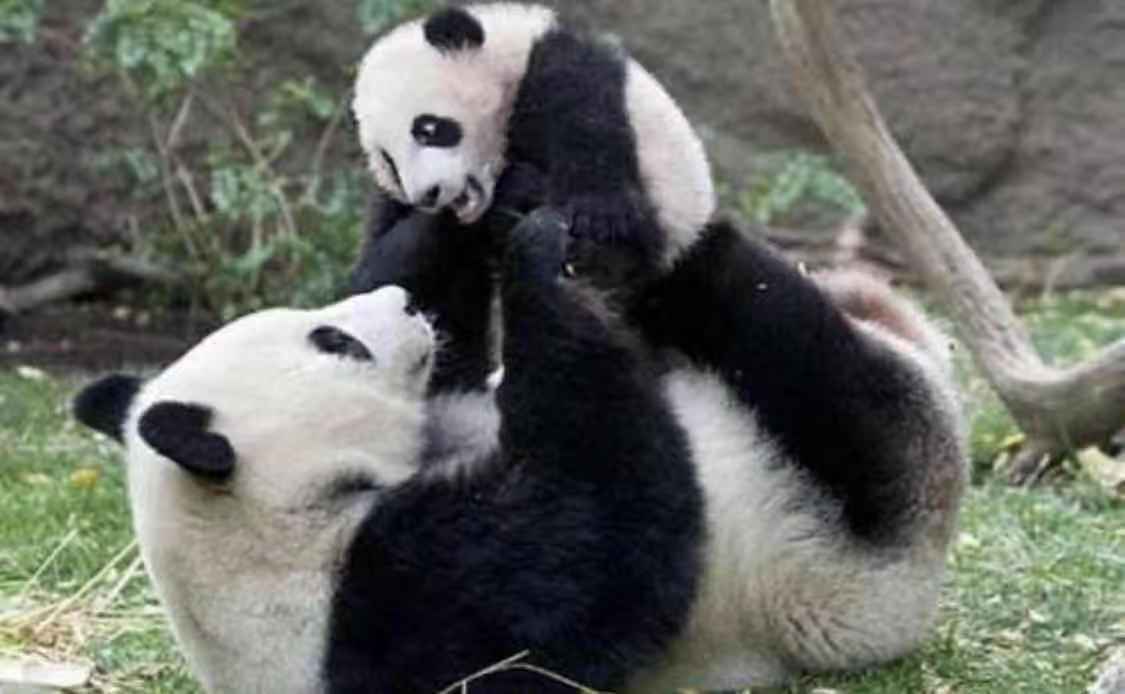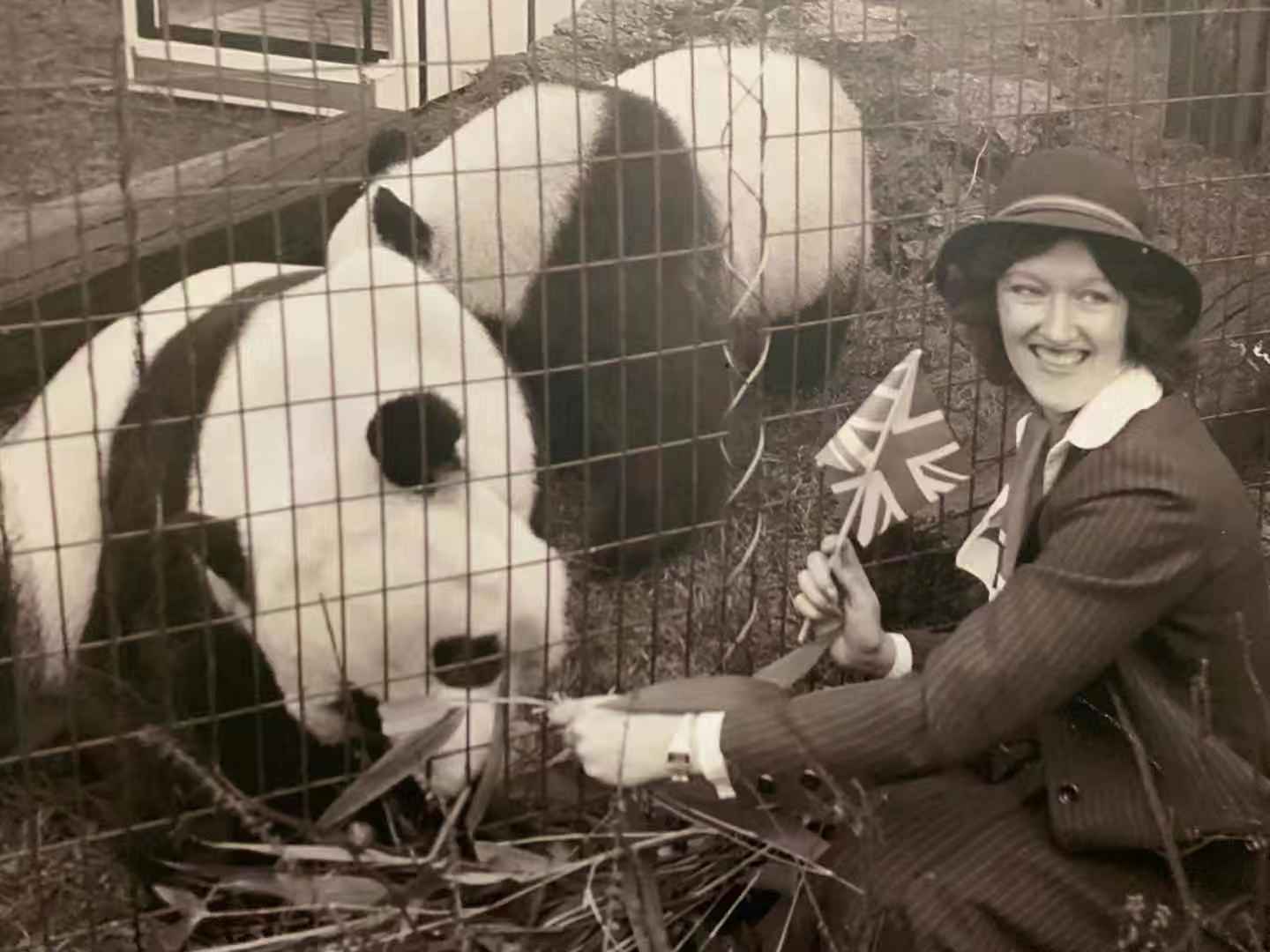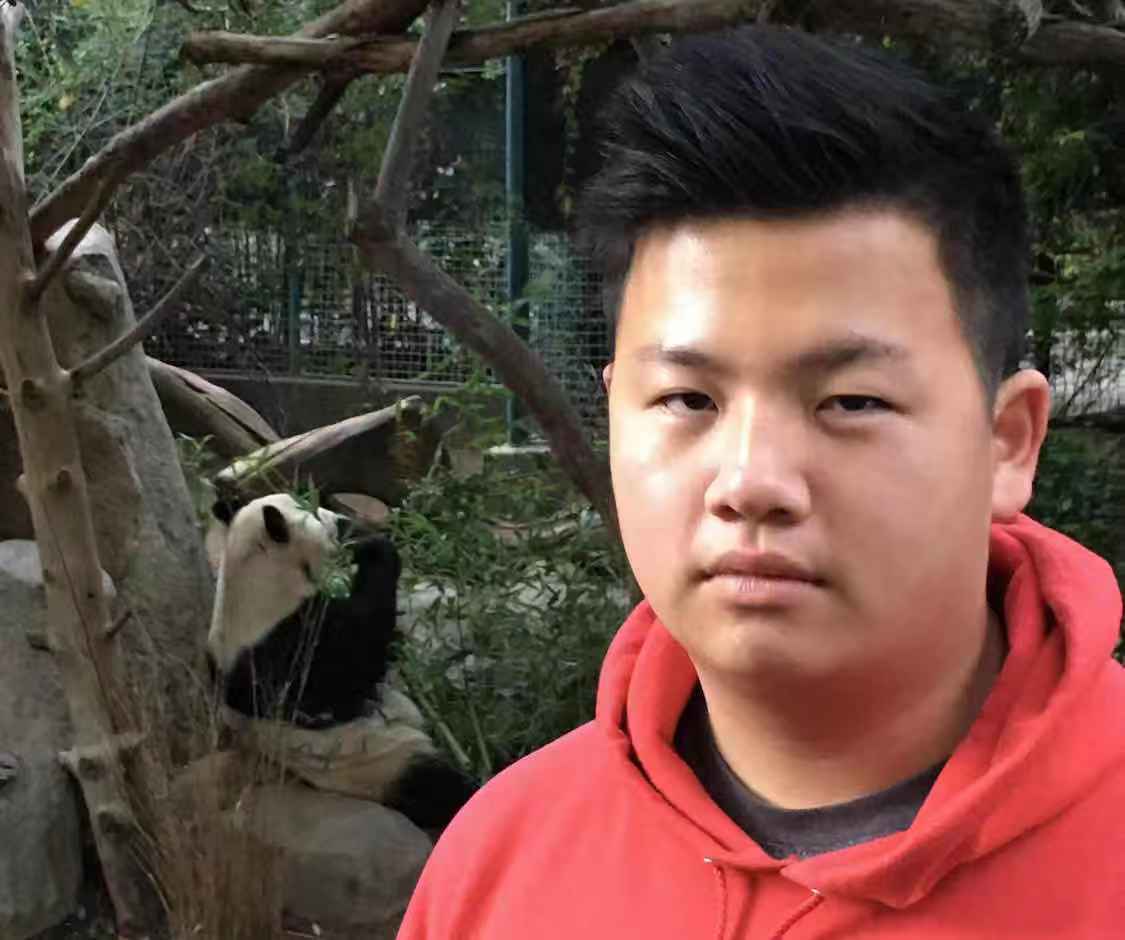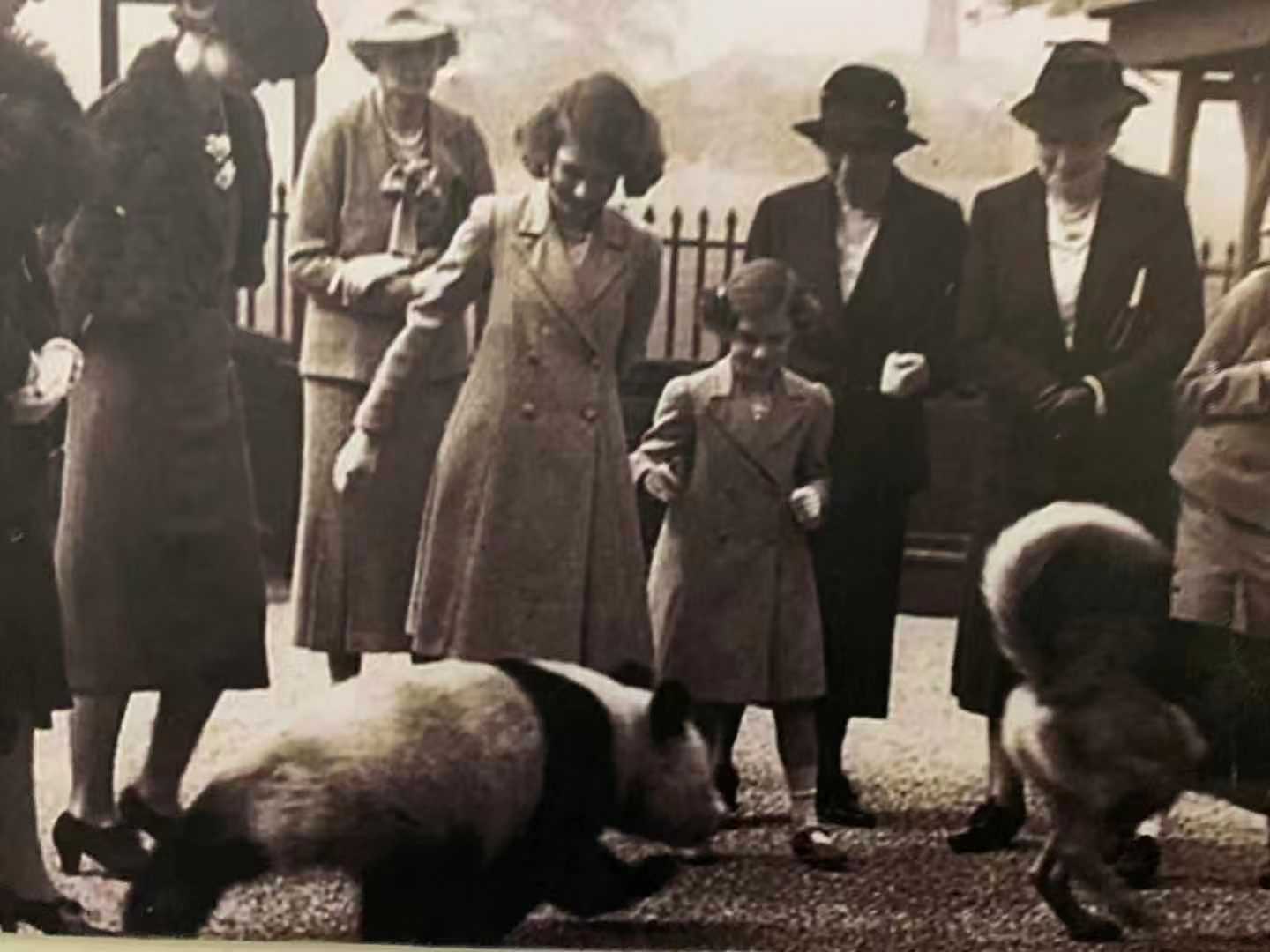Introduction
 The Giant panda is China’s symbol. Internationally, China has used the Giant Pandas on different occasions. For example, China has given pandas on loan to other countries, has used pandas as the five mascots in 2008 Beijing Olympics, and has used pandas as diplomatic gifts to other countries. It’s worthy for us to know why pandas are only unique to China but not in foreign countries and the purpose behind the loan of Pandas other countries so that we can see how different places work together to protect this adorable and precious species. Therefore, this article will first include an introduction on the reproduction of pandas and the main problems that endanger their living, including the lack of food and living habitat. Then, it will include an introduction of Panda diplomacy. Following that, we will look at how the foreign countries put their own individual effort into the conservation and improvement of Pandas. Finally, there will be a conclusion on what different countries, organizations, or individuals can do to help protecting pandas as well as my own reflection of the conservation of pandas.
The Giant panda is China’s symbol. Internationally, China has used the Giant Pandas on different occasions. For example, China has given pandas on loan to other countries, has used pandas as the five mascots in 2008 Beijing Olympics, and has used pandas as diplomatic gifts to other countries. It’s worthy for us to know why pandas are only unique to China but not in foreign countries and the purpose behind the loan of Pandas other countries so that we can see how different places work together to protect this adorable and precious species. Therefore, this article will first include an introduction on the reproduction of pandas and the main problems that endanger their living, including the lack of food and living habitat. Then, it will include an introduction of Panda diplomacy. Following that, we will look at how the foreign countries put their own individual effort into the conservation and improvement of Pandas. Finally, there will be a conclusion on what different countries, organizations, or individuals can do to help protecting pandas as well as my own reflection of the conservation of pandas.
Reproduction
 One of the reasons why there’s a very low number of pandas is their relatively low reproduction rate . Pandas tend to live independently, but tactics such as pandas that have walked on the same road days before and is a way for pandas to find their breeding mates. It takes at least five and a half years for a panda to become sexually matured. After becoming sexually matured, female pandas can mate with more than one male panda. However, the mating season for a panda is quite short, lasting only from March to May. After gestation, it takes about four to five months for the baby panda to become mature in its mother’s body. Usually, wild pandas give birth to a single baby only. However, if in captivity, there’s more of a chance for pandas to give birth to twins. A female panda can give birth to more than one baby panda before she attains the age of 20. However, the intervals between each pregnancy is usually about 18 months. As we can see, because of the short mating season and the limited number of births of baby pandas, the reproduction rate for pandas is low and slow.
One of the reasons why there’s a very low number of pandas is their relatively low reproduction rate . Pandas tend to live independently, but tactics such as pandas that have walked on the same road days before and is a way for pandas to find their breeding mates. It takes at least five and a half years for a panda to become sexually matured. After becoming sexually matured, female pandas can mate with more than one male panda. However, the mating season for a panda is quite short, lasting only from March to May. After gestation, it takes about four to five months for the baby panda to become mature in its mother’s body. Usually, wild pandas give birth to a single baby only. However, if in captivity, there’s more of a chance for pandas to give birth to twins. A female panda can give birth to more than one baby panda before she attains the age of 20. However, the intervals between each pregnancy is usually about 18 months. As we can see, because of the short mating season and the limited number of births of baby pandas, the reproduction rate for pandas is low and slow.
Lack of food and living habitat
 Apart from the problem of reproduction, the lack of bamboo and living habitat are also causes for the low number of pandas. For bamboos, their seeds grow very slowly, making them take a very long time to grow into plants that are large enough to be a panda’s food. For pandas, they tend to only eat bamboos near where they are living. Therefore, with a low growing rate of bamboos and the eating habit of pandas, there is always a lack of bamboos in pandas’ habitat, forcing the pandas to move to other places in order to find more food. When talking about living habitat, the fact that there are more than a billion people in China and the Chinese infrastructure development has also developed rapidly. People need to build roads, railways, and cities, thus making the natural resources like trees decrease at a fast rate. Without tall and a large number of trees, pandas are unable to live in habitats as there are no protections for them. As a result, pandas don’t have enough place to thrive and always have to walk around to find suitable habitats.
Apart from the problem of reproduction, the lack of bamboo and living habitat are also causes for the low number of pandas. For bamboos, their seeds grow very slowly, making them take a very long time to grow into plants that are large enough to be a panda’s food. For pandas, they tend to only eat bamboos near where they are living. Therefore, with a low growing rate of bamboos and the eating habit of pandas, there is always a lack of bamboos in pandas’ habitat, forcing the pandas to move to other places in order to find more food. When talking about living habitat, the fact that there are more than a billion people in China and the Chinese infrastructure development has also developed rapidly. People need to build roads, railways, and cities, thus making the natural resources like trees decrease at a fast rate. Without tall and a large number of trees, pandas are unable to live in habitats as there are no protections for them. As a result, pandas don’t have enough place to thrive and always have to walk around to find suitable habitats.
Panda diplomacy
 In the ancient times, pandas didn’t just exist in China. They also existed in other nearby countries like Myanmar and Vietnam. However, because of natural disasters, only pandas in China survived. Although pandas survived in China, their number is extremely low because of human activities which destroyed their habitat and thus comes in the low reproduction rate.
In the ancient times, pandas didn’t just exist in China. They also existed in other nearby countries like Myanmar and Vietnam. However, because of natural disasters, only pandas in China survived. Although pandas survived in China, their number is extremely low because of human activities which destroyed their habitat and thus comes in the low reproduction rate.

As a result of the panda’s unique status, China started to give pandas to other countries like the Soviet Union, the United States, Mexico, France, Spain and Japan in the 1950s as a way to establish diplomatic relationship. In 1958, the Soviet Union was the first receiver of a panda from China. A total of 24 pandas were given as gifts to other countries . However, in 1982, in response to the protection of endangered animals, the gifting of pandas from China had stopped. The gifting of pandas had ended, but another kind of diplomacy began in 1984. At that time, China lent 2 pandas to the United States for display during the Olympics. Since then, China started to lend pandas to different countries for display for months or years. The lending of pandas was beneficial to both parties. For the borrowing countries, the display of pandas can bring them considerable incomes and attract more tourists. For China, the lending of pandas means China can collect a large sum of money from the borrower. Gradually, the lending of pandas has become a commercial act. Such act was discovered to be dangerous to pandas because some organizations would catch wild pandas for China to lend to other countries and it would be difficult to ensure that the borrowing countries were able to provide a suitable habitat for pandas to live. Some animal organizations and environmental organizations have then stood on the opposite sides of the lending of pandas. As a result, many zoos worldwide gradually stopped to request for the borrowing of pandas from China.
Keeping all pandas in China is still not the best way to protect the pandas since resources in China can be limited – especially research resources. Therefore, China wished to corporate with other countries to discover more ways for the conservation of pandas and for the improvement of their reproduction rate and health. In recent years, China has established agreements with overseas countries that wish to borrow pandas. China agreed to lend pandas to those countries for 10 to 15 years for the purpose of corporative research to help in the improvement of living habit of pandas and their health. All the pandas born will belong to China and will be sent to China. Even if the pandas die, their bodies still belong to China . To ensure smooth and effective research, China has the power to appoint research staffs to reach that country for doing research works with local staffs . Although China still collects payments from the borrowing countries, the loans of pandas nowadays are long-term loans and for the purpose of research. The problem of largely catching wild pandas for commercial or for diplomatic purpose has passed.
Behavior of foreign countries

Among the history of loan of pandas from China to other countries, one of the most eye-catching news is the return of the giant panda Bai Yun and its child to China in May 2019 . Back in 1996, under an agreement between China and the San Diego Zoo of the United States, both parties agreed on a 12-year loan of two pandas named Bai Yun and Shi Shi for the purpose of research. In 2008, the panda loan was further extended and renewed, making the deadline to be 2019.
 With my personal experience to the San Diego Zoo, I have seen how much the zoo has spent for the providing of a good living environment for the pandas and the efforts they put in the researches. Before the arrival of the two pandas, San Diego Zoo has spent a large amount of money to build a new exhibit area for the living of the pandas. On top of that, members in the San Diego Zoo has developed tests for early pregnancy detection. When people are able to discover the pregnant pandas, they can offer special care for the pandas at an earlier stage, thus ensuring the increase of the survival rate of young pandas. Furthermore, they have also developed a new milk powder formula specialized for young pandas, a very useful tool for mother panda who can’t give sufficient milk to her baby. This has largely increased the surviving rate to 100% while the surviving rate of young pandas was only 10% to 20% in 1996. An obvious result is that a total of 6 cubs were produced in the zoo. Members of the San Diego Zoo have never stopped learning about pandas, including their reproduction, communication, and nutrition. By using GPS technology and gathering data, the zoo has never stopped their research on pandas. While the zoo has discovered and developed better ways to help pandas, it didn’t keep them secret. The zoo has worked together with China to discuss and exchange their discovery on the new improvements human can make for pandas. For example, the zoo has used the milk powder formula and a technique developed by Chinese panda experts called “twin swapping” together to further ensure a stable surviving rate of young pandas . From the example of the San Diego Zoo, we can see different countries have actually continued to work together for the conservation of endangered and vulnerable animals.
With my personal experience to the San Diego Zoo, I have seen how much the zoo has spent for the providing of a good living environment for the pandas and the efforts they put in the researches. Before the arrival of the two pandas, San Diego Zoo has spent a large amount of money to build a new exhibit area for the living of the pandas. On top of that, members in the San Diego Zoo has developed tests for early pregnancy detection. When people are able to discover the pregnant pandas, they can offer special care for the pandas at an earlier stage, thus ensuring the increase of the survival rate of young pandas. Furthermore, they have also developed a new milk powder formula specialized for young pandas, a very useful tool for mother panda who can’t give sufficient milk to her baby. This has largely increased the surviving rate to 100% while the surviving rate of young pandas was only 10% to 20% in 1996. An obvious result is that a total of 6 cubs were produced in the zoo. Members of the San Diego Zoo have never stopped learning about pandas, including their reproduction, communication, and nutrition. By using GPS technology and gathering data, the zoo has never stopped their research on pandas. While the zoo has discovered and developed better ways to help pandas, it didn’t keep them secret. The zoo has worked together with China to discuss and exchange their discovery on the new improvements human can make for pandas. For example, the zoo has used the milk powder formula and a technique developed by Chinese panda experts called “twin swapping” together to further ensure a stable surviving rate of young pandas . From the example of the San Diego Zoo, we can see different countries have actually continued to work together for the conservation of endangered and vulnerable animals.
Helping pandas
Chinese authorities have created reserves for pandas with 67 reserves these years. Furthermore, the Chinese government has worked together with the World Wildlife Fund to build bamboo corridors in the forests so that pandas can gradually find more habitats and food that are suitable for them to live. If not successful, hopefully the corridors would also provide more chances for pandas to meet their breeding mates . The Chinese government has also started the “grain-to-green” program, which provides cash and grain to farmers who agree to give up farming on slopes to help gradually transition it to natural forests . Although these forests have not been proved perfectly suitable for pandas, it’s a big step taken by the Chinese government to try to develop new habits for pandas.

 Apart from the effort of finding more lands for pandas to live, it is also important not to destroy their current habitat. Therefore, cooperation by local communities is important. It’s advisable that people living near pandas’ habitats can try to use alternative energy sources like biogas from animals’ manure instead of cutting woods from forests for producing energy. People also have to raise their individual concept of conservation. Many animals in this world do not have the ability to protect themselves from human activities. For example, when people try to destroy the forest, animals living there will be forced to leave involuntarily. We are the only species who are powerful enough to offer protection to all animals, including pandas, with our technology and human resources. Thanks to the huge effort of China and corporation from other countries, the ranking of pandas has decreased from “endangered” to “vulnerable”. These people have spent countless hours to develop, research, and monitor the pandas in order to invent the suitable medicine, food, and living environment for pandas. Pandas are not just national to China; they are also a valuable species for the rest of the world. Now, it is time for us to do what we can do for this adorable species. In the coming years, pandas are going to face a lot more challenges, especially the problem of sending pandas in captivity back to live in nature. Therefore, the efforts of everyone are essential in helping the Giant Pandas of the World to find a way to comfortably adapt to the new living environment.
Apart from the effort of finding more lands for pandas to live, it is also important not to destroy their current habitat. Therefore, cooperation by local communities is important. It’s advisable that people living near pandas’ habitats can try to use alternative energy sources like biogas from animals’ manure instead of cutting woods from forests for producing energy. People also have to raise their individual concept of conservation. Many animals in this world do not have the ability to protect themselves from human activities. For example, when people try to destroy the forest, animals living there will be forced to leave involuntarily. We are the only species who are powerful enough to offer protection to all animals, including pandas, with our technology and human resources. Thanks to the huge effort of China and corporation from other countries, the ranking of pandas has decreased from “endangered” to “vulnerable”. These people have spent countless hours to develop, research, and monitor the pandas in order to invent the suitable medicine, food, and living environment for pandas. Pandas are not just national to China; they are also a valuable species for the rest of the world. Now, it is time for us to do what we can do for this adorable species. In the coming years, pandas are going to face a lot more challenges, especially the problem of sending pandas in captivity back to live in nature. Therefore, the efforts of everyone are essential in helping the Giant Pandas of the World to find a way to comfortably adapt to the new living environment.
Bibliography
1. Smithsonian’s National Zoo & Conservation Biology Institute, 2020, Giant Panda.
2. Kathleen Carmel Buckingham, Jonathan Neil William David, Paul Jepson 2013, ‘Environmental Reviews and Case Studies: Diplomats and Refugees: Panda Diplomacy, Soft “Cuddly” Power, and the New Trajectory in Panda Conservation’, Environmental Practice, Volume 15, Issue 3, September.
3. Wang Mingjie 2017, ‘Panda Power’, China Daily.
4. Lin Shiqing 2019, ‘China’s Number One Goodwill Ambassador: Exploration of the Origin and Significance of the Panda Diplomacy’, North America Intellectual Property Corporation.
5. Phillip Molnar 2019, ‘Last pandas at San Diego Zoo’, Los Angeles Times.
6. San Diego Zoo, 2020, Giant Panda.
7. Gillian Murdoch 2007, ‘Bamboo lovers lane to hook up China’s lonely pandas’, Reuters.
8. Suzanna Dayne 2017, ‘Grain for green: How China is swapping farmland for forest’, Forests News.


